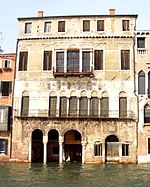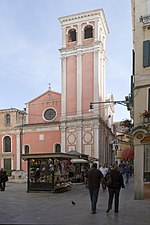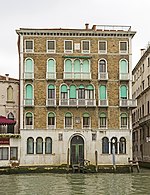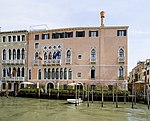Santi Apostoli, Venice

The Chiesa dei Santi Apostoli di Cristo (Church of the Holy Apostles of Christ), commonly called San Apostoli, is a 7th-century Roman Catholic church located in the Cannaregio sestiere of the Italian city of Venice. It is one of the oldest churches in the city and has undergone numerous changes since its foundation. The present building is the result of a major reconstruction project which was undertaken in 1575. The church is notable particularly for the Cornaro Chapel, an important example of Early Renaissance architecture, added by Mauro Codussi during the 1490s. The chapel is the burial place of several members of the powerful Cornaro family (Venetian: Corner), including Catherine Cornaro, Queen of Cyprus and Armenia. The church houses several works of art including pieces by Giambattista Tiepolo and Paolo Veronese.
Excerpt from the Wikipedia article Santi Apostoli, Venice (License: CC BY-SA 3.0, Authors, Images).Santi Apostoli, Venice
Campo Santi Apostoli, Venice Venezia-Murano-Burano
Geographical coordinates (GPS) Address External links Nearby Places Show on map
Geographical coordinates (GPS)
| Latitude | Longitude |
|---|---|
| N 45.440502777778 ° | E 12.336630555556 ° |
Address
Chiesa dei Santi Apostoli
Campo Santi Apostoli
30170 Venice, Venezia-Murano-Burano
Veneto, Italy
Open on Google Maps











